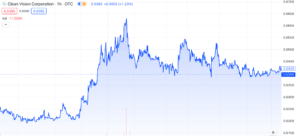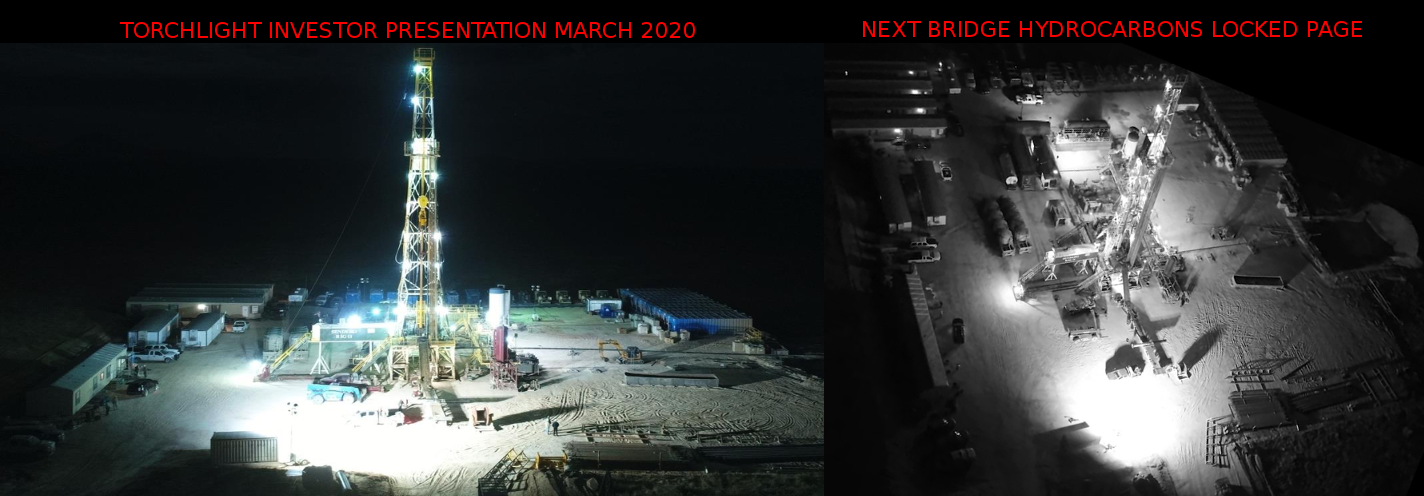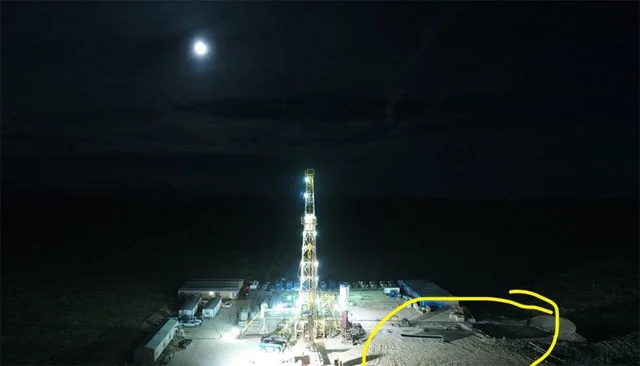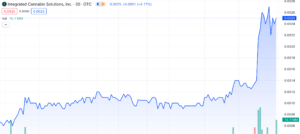Clean Vision Corporation (OTC: CLNV) has experienced several interesting developments recently, but it hasn’t noticeably influenced the market with any substantial gains. Nonetheless, we believe it’s worth providing an update on the company given it’s been a few months since our last mention. In today’s discussion, we’ll explore a variety of updates and their significance, with aim of providing insight on what to expect for 2024.

Background:
Clean Vision is led by Dan Bates, and their goal is to tackle the global plastic waste crisis head-on. Their wholly owned subsidiary, Clean Seas, has developed the Plastic Conversion Network (PCN), a groundbreaking technology aimed at diverting millions of tons of waste plastic from landfills, incineration, and oceans. The PCN converts this plastic feedstock into clean fuels and green hydrogen, significantly reducing reliance on fossil fuels and lowering the carbon footprint.
For a brief 2 minute overview on the company, feel free to reference the video CLNV’s subsidiary put together on YouTube. Here’s the link.
Clean Seas utilizes proven pyrolysis technology to produce environmentally friendly products, which are sold to multinational petrochemical companies, driving the circular plastic economy. Operational PCN facilities are already in place in Morocco and India, with additional conversion facilities in development across West Virginia, Arizona, and Southeast Asia. Long-term feedstock supply agreements exceeding one million tons of waste plastic annually have been secured at no cost.
Their recently trademarked brand, AquaH®, is produced in their PCN. According to the release, it offers a differentiated green hydrogen product from carbon-neutral sources. Currently, hydrogen is predominantly produced through methods that involve fossil fuels, which of course contributes to global carbon emissions. Furthermore according to Deloitte’s 2023 global green hydrogen outlook, this could be a $1.4T annual market by 2050.
$65 Million Plastic Conversion Facility:
CLNV is making big moves in West Virginia and according to the release on October 24th, 2023, they’ve brought in some serious players—CDI Engineering Solutions and ERM—to help out with their Clean-Seas West Virginia project.
CDI has over 70 years of experience integrating engineering, design, project support, procurement and construction management services to the energy, chemicals and electrical infrastructure markets.
ERM is the world’s largest advisory firm focused solely on sustainability, offering environmental, health, safety, risk and social expertise for more than 50 years with more than 8,500 dedicated professionals operating across 40 countries.
The plan is to kick things off in 2024, turning 100 tons of plastic every day into recycled plastics and clean fuels. It’s a hefty project with a $65 million investment, creating over 200 jobs initially. And they’re not stopping there—they want to scale up to 500 tons of plastic per day over time.
West Virginia Governor Jim Justice is also on board, throwing over $12 million in state incentives to support the project.
Governor Jim Justice made a reference to Clean Seas in his state of the union address. If you want to catch the mention, go to 34:15 in the video. The three minutes leading up to it are also worth reviewing.
Subscribe to Microcapdaily.com Right Now by entering your Email in the box below.
Launches Global Operations:
CLNV made another significant advancement, planning to launch waste plastic conversion facilities in the European Union, Eastern Europe, and Southeast Asia. This will be accomplished through their new subsidiary, Clean-Seas Partners UK Limited (CS-UK), who of course shares the same vision of creating sustainable solutions to the global plastic pollution crisis.
Under the leadership of Managing Director Shaun Wootton, CS-UK will play a crucial role in strategic project development and investment facilitation, leveraging established relationships in the Middle East, Southeast Asia, and Europe.
To fortify effective governance and strategic direction, CS-UK is assembling a distinguished board with internationally recognized figures in banking, sustainability, and energy. This approach aims to have a diverse and experienced board guiding CS-UK in realizing its vision of promoting sustainability and environmental stewardship across diverse regions.
$340 Million Bond Offering:
CLNV even announced they partnered with a global advisory firm, Grant Thornton, to issue up to $340 million in Green Bonds. This is the world’s sixth-largest network of independent accounting and consulting firms, employing 62,000 people in more than 130 countries and had revenues of $6.6 billion in 2021. These bonds will fund the expansion of Clean Vision’s Plastic Conversion Network (PCN) under the “Clean-Seas” initiative worldwide, aimed at combatting plastic pollution on a global scale.
With the Green Bond’s net proceeds, CLNV plans to deploy at least six plastic waste conversion lines globally, with strategic locations in West Virginia, Arizona, Southeast Asia, and expansion in Morocco. The Green Bond is also expected to attract environmentally conscious investors, setting a new standard for corporate responsibility.
$15M Government Loan:
Lastly, under the capable management of Huntington Bank, CLNV has recently secured a $15 million government loan. What sets this apart is that the loan is FORGIVABLE.
A forgivable loan is a type of loan where the borrower is not required to repay the borrowed amount under certain conditions. Typically, these conditions are related to the borrower meeting specific criteria, such as using the funds for approved purposes, maintaining certain employment levels, or achieving predetermined goals. If the borrower fulfills these conditions, the loan is forgiven, and they are not obligated to repay the borrowed amount. Forgivable loans are often used as an incentive or support for specific activities, such as job creation, small business development, or other initiatives that contribute to economic growth or community welfare.
Not to mention it won’t result in any dilution for shareholders. This is an unexpected and uncommon accomplishment for an OTC company. Securing a government loan of this size without any dilution is truly impressive.
Conclusion:
CLNV has made impressive strides tackling the global plastic waste crisis, especially given their valuation of merely $22.65 million. The team has swiftly achieved key objectives, including a $65 million plastic conversion facility in West Virginia, global expansion through Clean-Seas Partners UK Limited, a $340 million Green Bond Offering, and a remarkable $15 million forgivable government loan. The vast $1.4 trillion market they’re tapping into offers an interesting opportunity with current indicators looking positive. Nevertheless, it’s crucial to acknowledge that there is still significant work ahead, and the team needs to maintain consistent execution to turn this potential into a reality.
We will update you on CLNV when more details emerge, subscribe to Microcapdaily to follow along!
Disclosure: We have not been compensated for this article/video. MicroCap Daily is not an investment advisor; this article/video does not provide investment advice. Always do your research, make your own investment decisions, or consult with your nearest financial advisor. This article/video is not a solicitation or recommendation to buy, sell, or hold securities. This article/video is our opinion, is meant for informational and educational purposes only, and does not provide investment advice. Past performance is not indicative of future performance.
Picture by pasja1000 from Pixabay

 Uncategorized3 years ago
Uncategorized3 years ago
 Micro Cap Insider4 years ago
Micro Cap Insider4 years ago
 Media & Technology5 years ago
Media & Technology5 years ago
 Featured2 years ago
Featured2 years ago
 Media & Technology4 years ago
Media & Technology4 years ago
 BioPharma4 years ago
BioPharma4 years ago
 Uncategorized3 years ago
Uncategorized3 years ago










WhiskeySausage
November 15, 2015 at 11:00 pm
Finally, a fair and balanced report. The shorts spewed a mountain of false reports that infuriated many and misled a lot of investors. Thank you Mccarthy.
Michael
November 16, 2015 at 9:56 am
Great Article! May I point out you left out one HUGE metric: ACDS-ADL. Avanex showed improvement in 11 of 14 patients in this all important metric which measures patients Activities of Daily Living capabilities i.e. their ability to care for themselves. Avanex’s results are not only highly relevant it is spectacularly meaningful.
DZP and RVT=101 have both done extensive studies vs placebo to test for ACDS-ADL improvement. Though both claim statistical significance to improve that score, in fact they mean vs placebo. In the real world they do not improve PATIENT ACDS-ADL and those scores decline from the moment the patient takes the drug in a steady decline over 48 months. Thus both companies have PROVEN that they cannot stop ADL decline in patients and thus patients on those drugs continue to lose the ability to care for themselves day by day, week by week, month by month and year by year whilst on those drugs.
In fact the FDA in reviewing the data said both that the ‘improvement’ over placebo has little to no bearing on a patients actual day to day life, and that regardless patients CONTINUE TO DECLINE in DZP. DZP and RVT-101’s claim to ‘stat sig’ in improving over placebo also forces them to claim ‘stat sig’ in NOT BEING ABLE TO improve it.
What we also have are large patient samples over long periods ON PLACEBO whose ACDs-ADL we can measure and the picture is not pretty; almost universal steady-state decline.
Let’s be hugely conservative and say however that 5% of Alzheimer patients IMPROVE ACDS-ADL over time. I’d put that # at 100x the actuality but it’s a nice conservative # to start with (happy to follow up later with even one of hte prior DZP chart studies).
The odds of 11 of 14 patients improving based on that 5% placebo # therefor is 0.000000000000308% or 324 TRILLION to 1. Avanex simply can’t say that because they didn’t test against patients on placebo but again make NO mistake that there is ample ‘stat sig’ testing for ACDS-ADL scores for patients not being treated i.e. on ‘placebo’.
Yet Avanex made sure on the chart they displayed at CTAD to put right undernear an asterisk:
*Not Statistically Significant, the test was not designed to test for statistical significance
This brutal honesty was used AGAINST them to claim the study was “meaningless” and at the same time to imply that they claimed efficacy where it was “insigificant”.
Make no mistake about it; the results demonstrated were not ‘statistically significant’ only because there was no placebo arm tested against (again there are millions of patient histories to use if one wanted) and because the study wasn’t even testing for efficacy. Why? Well in part because it was a safety trial and in part because since the leading ALZ drug DPZ and it’s heir apparent RVT-101 have NEVER been able to reverse ACDS-ADL in 4 years let alone 5 weeks, and because their P300, MMSE and ACDS-COG scores are negligble at 5 weeks, Avanex had no reason to suspect that THEY would in fact reverse ACDS-ADL for the first time ever and would acheive efficacy scores in 5 weeks that DZP took 6 months to achieve. So they did not set up the study to test ‘stat sig’ and were scrupulously honest in stating that despite the billions to one odds that they would have achieved those results.
These are the results that are being called ‘meaningless’ and this is the company that is being called dishonest.